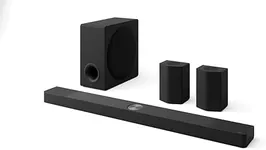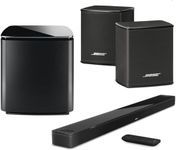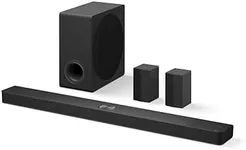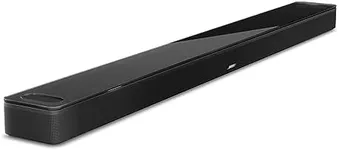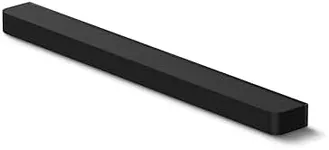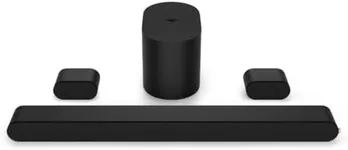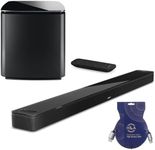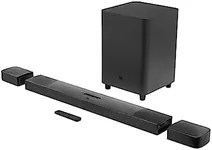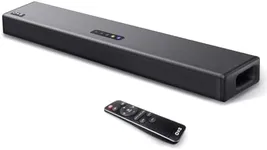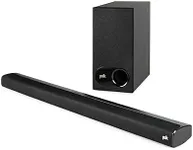Buying Guide for the Best Soundbar Atmos
When choosing a soundbar with Dolby Atmos, it's important to consider several key specifications to ensure you get the best audio experience for your needs. Dolby Atmos soundbars are designed to provide immersive, three-dimensional sound, making your movie and music experiences more engaging. To pick the right soundbar, you need to understand the key specs and how they align with your preferences and usage scenarios.ChannelsThe number of channels in a soundbar indicates how many separate audio signals it can produce. For Dolby Atmos, you typically want at least a 5.1.2 setup, where '5' stands for the five main channels (left, center, right, and two rear), '1' for the subwoofer, and '2' for the two height channels that create the overhead sound effects. More channels can provide a richer and more immersive experience. If you have a large room or want the most immersive experience, go for a soundbar with more channels. For smaller rooms or simpler setups, fewer channels may suffice.
Power OutputPower output, measured in watts, indicates how loud and powerful the soundbar can be. Higher wattage means more powerful sound, which is important for larger rooms or if you like to listen to your audio at higher volumes. For a small to medium-sized room, a soundbar with 100-300 watts should be sufficient. For larger rooms or if you want a more powerful sound, look for soundbars with 300 watts or more. Consider your room size and how loud you like your audio when choosing the power output.
Connectivity OptionsConnectivity options determine how you can connect your soundbar to other devices. Common options include HDMI ARC/eARC, optical, Bluetooth, and Wi-Fi. HDMI ARC/eARC is preferred for the best audio quality and ease of use, as it allows for high-quality audio transmission and control through a single cable. Optical connections are also good for high-quality audio but lack some of the advanced features of HDMI. Bluetooth and Wi-Fi are great for wireless streaming from your phone or other devices. Choose a soundbar with the connectivity options that match your devices and how you plan to use it.
Size and DesignThe size and design of the soundbar should complement your TV and room decor. Soundbars come in various sizes, so it's important to choose one that fits well with your TV and doesn't obstruct the screen or look out of place. Measure the space where you plan to place the soundbar and ensure it fits comfortably. Additionally, consider the design and color to match your room's aesthetics. A well-sized and designed soundbar will not only sound good but also look good in your setup.
SubwooferA subwoofer is responsible for producing deep bass sounds, which add depth and richness to your audio experience. Some soundbars come with a built-in subwoofer, while others include a separate wireless subwoofer. A separate subwoofer generally provides better bass performance. If you enjoy watching action movies or listening to music with a lot of bass, a soundbar with a separate subwoofer is a good choice. For more compact setups or if bass is not a priority, a built-in subwoofer may be sufficient.
Smart FeaturesSmart features in a soundbar can enhance your user experience by providing additional functionality. These features may include voice assistants like Alexa or Google Assistant, built-in streaming services, and app control. Voice assistants allow you to control the soundbar and other smart home devices with your voice, while built-in streaming services let you play music directly from the soundbar without needing another device. App control can make it easier to adjust settings and manage your soundbar. Consider which smart features are important to you and choose a soundbar that includes them.
